Over a million print and e-books are self-published each year. And it’s estimated that indie authors account for around 30% of all e-book sales in English-speaking markets.
Which presents you, indie author, with a challenge.
How do you get your latest book release in front of the right audience when so many others like you are doing the same?
Gone are the days when you could list your latest book release on Amazon, garner lots of organic visibility and make a tidy profit.
These days, indie authors have to learn how to market their books. And there’s perhaps no better channel than your own email list.
Page Contents
Why every indie author needs a mailing list
“If you write it, they will come” might be an adage authors hope is true. But the harsh reality is that you need to promote your work to get it seen by the right people.
And launching a new book to an already-captive audience you’ve built and nurtured is going to be far more successful than waiting for readers to find your latest release.
That’s why it’s so important for self-published authors to build an email list. It gives you immediate access to a group of people that are interested in what you’re putting out into the world.
As an indie author, you’re no doubt well-versed in sales channels for your books, including the likes of Amazon and Gumroad. But you’re not going to make many sales without creating some awareness and generating interest in your books first. In other words, you can’t take full advantage of these sales channels without also having effective marketing channels.
And email is one of the best ways to promote a book as an author as you can create demand for your work. But that’s not the only benefit.
The benefits of building your own mailing list
- Email is personal – with an email, you’re entering a person’s inbox – their private space. And depending on what info you ask for in your sign-up forms (more on that later), you can even address them individually by name. This is not something you can do with social media or any other channel. Which makes email a more personal mode of communication with an audience.
- You own your list – every email address you collect remains an asset that you control. With a Facebook page, your followers “belong” to Facebook and you can’t reach them outside of that platform. But when you build an email list, there’s no middleman to worry about – no threat of dwindling organic reach or having your page removed.
- Email marketing is powerful yet cheap – not only can you reach people at scale with email, you can also do it at a much lower cost than most other channels. Plus, email marketing is usually far more effective than other methods of promotion.

“It’s important for authors to build their own list because it’s the one form of communication with your readers that you have complete control over. With an email list, you can talk directly to your readers, and it’s an easy way to let them know when you have news for them and build a relationship.”
– Becca Steele
How indie authors can build a successful mailing list
Now that we’ve covered the ‘why’, let’s jump into the ‘how’, with a five-step guide to building your author’s email list.
Step 1: Choose the right email marketing service
Before you begin asking people for their email address, you need a tool that will allow you to build sign-up forms for your website, collect contact details in mailing lists, and send bulk emails to the people that join.
As a self-publishing author, you’ll want a tool that offers great value. Even better, a tool that is free while you begin building your email list.
The email marketing service you choose should include customisable sign-up forms and landing pages for collecting emails. It should have an easy-to-use email editor for designing emails that your readers will enjoy receiving. And it should also enable you to set up automated welcome emails so that you can greet new subscribers the moment they sign up.
There are dozens of options out there. But we recommend EmailOctopus, email marketing for authors, especially if you’re just starting out with your mailing list. It’s free for your first 2,500 subscribers and gives you access to all the features you need to grow your audience.
Plus, EmailOctopus has a direct integration with BookFunnel and social icons for adding links to BookBub, Goodreads and Amazon in your emails. (It’s the little things that count).
If you like to shop around, other good options popular with authors include ConvertKit, Mailerlite and Mailchimp.

Step 2: Create a compelling opt-in gift to entice subscribers
Once you’ve decided on your email marketing service, it’s time to consider what you can offer to entice subscribers to join your list. Because one of the best ways of building an engaged email list is by providing value. And for authors, a chapter preview or free eBook works perfectly.

Giving away a free sample of your writing taps into the persuasion technique of reciprocity, a psychological hack often used in marketing. If you give something to someone, they are likely to respond in kind.
So if you give a free book to readers, they are more likely to give you their email address in return. Best of all, if they like what you’re giving away for free, they’ll be more likely to pay for it in the future. And this is how you’ll sell more books.
If your main goal is to promote a new book, then offering readers a taste of what the book is all about is a great way to build excitement and demand. This is where a chapter preview works best.
However, if you have a decent back catalogue of books then giving away an entire book for free will be even more compelling than a chapter preview. Especially if you can increase the perceived value of the book by referencing how much it normally sells for.
The benefit of these freebies is that you can be confident that anyone signing up for a chapter preview or free book is interested in your writing. And therefore, they perfectly match your target market.
To reach an even wider audience, you can offer your free ebook on sites like Book Cave. This gets your content in front of a ready-made audience of people looking for new books to read. And you can integrate directly with your email marketing tool for continued communication.
Here are some more options for a compelling opt-in gift:
- Audio versions of your books
- Access to deleted scenes
- Alternative endings
- Behind-the-scenes look at your characters or topic
- Exclusive content not published, for example, a short prequel

“Using an easy-to-install signup form that I created with EmailOctopus, I integrate that link on my social media pages where readers can sign up for my newsletter and receive a free eBook in my welcome email. That one detail has grown my mailing list into thousands of devoted fans.”
– Pamela Crane
Step 3: Set up a welcome series of emails
If you’re giving something away for free in exchange for an email address, new subscribers are going to expect to receive this straight away.
And even if you decide not to give away a freebie, most people expect to receive a welcome message when they join a mailing list.
This is why the next step is to set up a welcome email. It’s the perfect opportunity to introduce yourself, build rapport with new subscribers and improve your deliverability so that more of your emails hit the inbox.
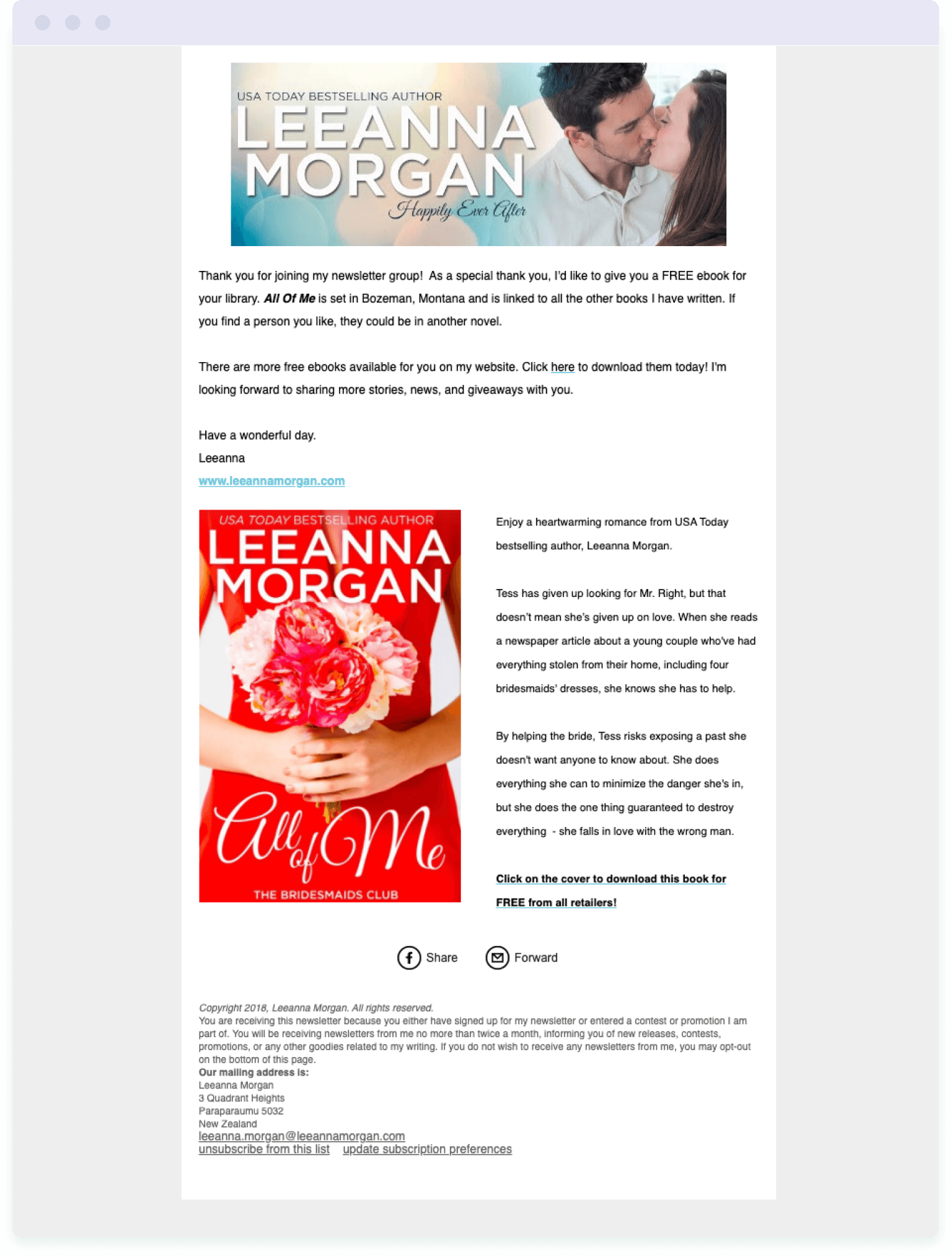
But you don’t have to stop at just one welcome email – you can set up an entire sequence of emails to engage new subscribers. And ultimately, encourage them to buy your book.
Here’s what a welcome email series might look like for an author:
- The welcome email – this should be sent immediately after a new subscriber signs up and deliver the freebie you offered. A great welcome email should also thank subscribers for signing up and set expectations of how often they’ll hear from you.
- The follow up email – this could be sent a few days or a week after the welcome message, and in this email you could check in with subscribers to ask how they’re enjoying the free gift. You could also use this opportunity to tell subscribers more about you and your work.
- The hard sell email – by now, your new subscribers should have warmed to you. So now’s a good time to suggest they purchase your latest book. You could also offer an exclusive discount to increase the likelihood of a purchase.
Step 4: Add persuasive sign-up forms to your author’s website
Once you’ve got your opt-in gift and welcome emails ready to go, it’s time to update your website with persuasive sign-up forms. This is how you’re going to collect emails for your list.
A sign-up form can be discreet – a simple bar at the top or bottom of a web page. And it’s a good idea to use this particular style on secondary pages, in other words, pages that don’t receive as much traffic as your key pages.
Here’s an example on author Alice Early’s website:
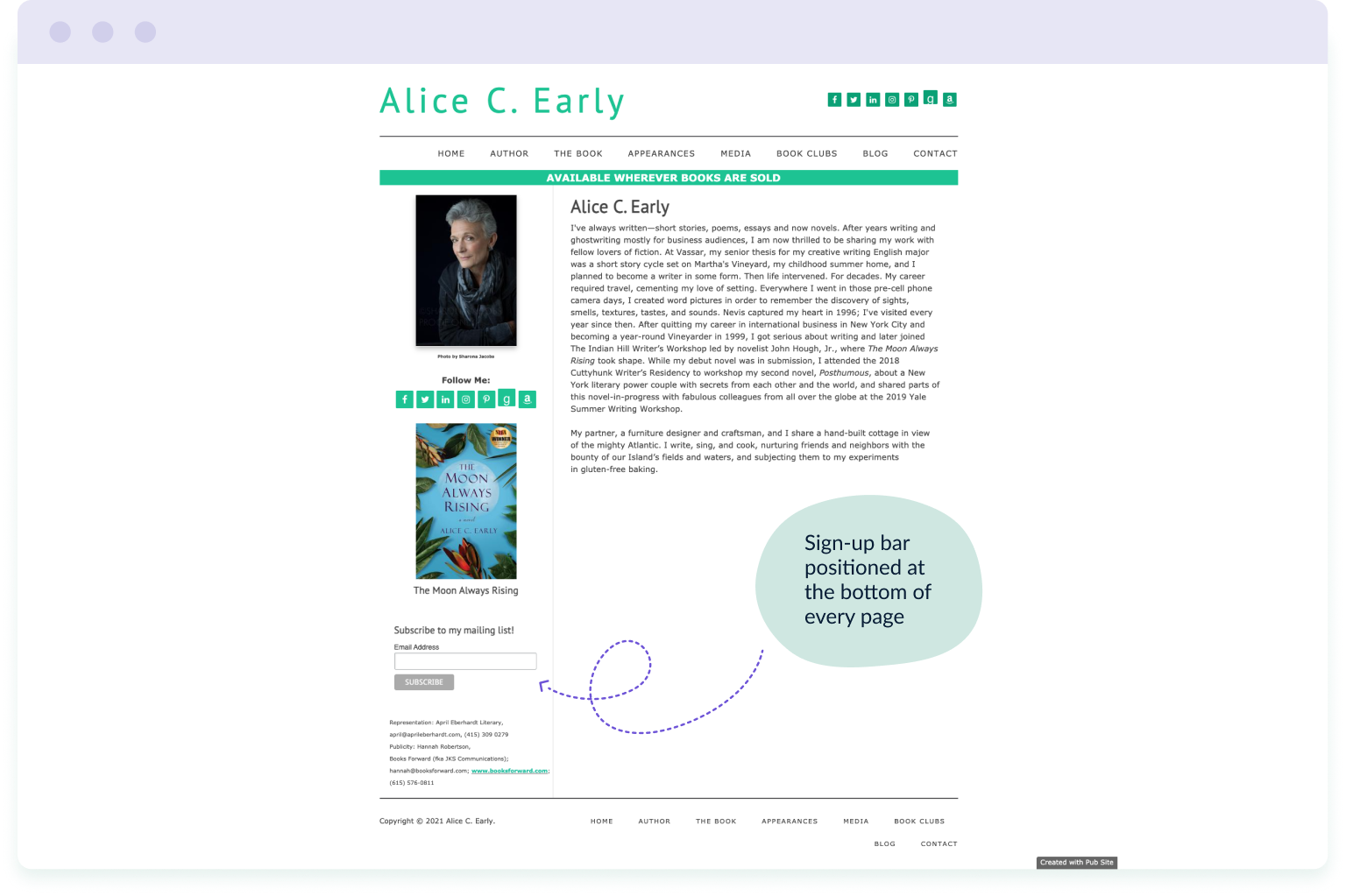
But sometimes you need to do more to grab people’s attention. And that’s where a pop-up form works best. Using software like OptinMonster or NinjaForms, you can add more advanced sign-up forms that are shown depending on how a visitor interacts with your website. For example, you could show a pop-up form when a visitor is just about to leave your site.
Or you could use a two-step process like author J.F. Penn on her website:
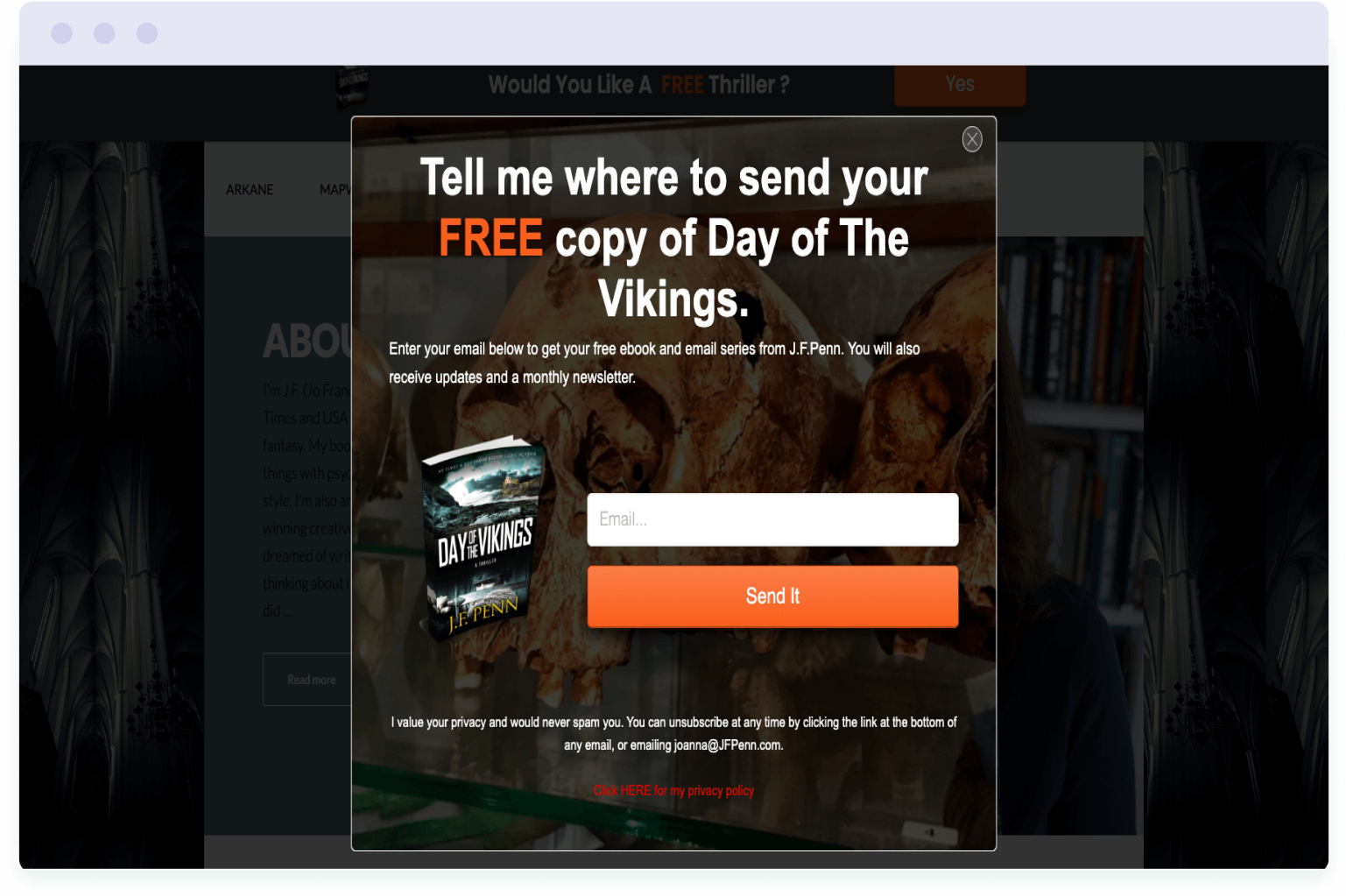
A message at the top of the homepage asks whether you’d like a FREE thriller. On clicking the big orange “YES” button, the sign-up form appears. And it entices visitors with a picture of the book, a persuasive heading and a clear call-to-action button.
Ideally you should have a sign-up form on every page of your website. But it’s also a good idea to have a dedicated landing page with the sole goal of getting new subscribers. You can then share this page when asking people to join your list. And when you start to promote your free gift.
Here’s an example of a dedicated landing page from author Merren Tait:
The call-to-action of “send my free book” is hard to miss. And the offer is clear – a free book awaits everyone who signs up. Merren also does a good job of creating a sense of community and exclusivity by referring to her mailing list as her “reader’s group”.
💡 Here are more ways to optimise your sign-up forms and convert more website visitors into subscribers
Step 5: Drive traffic to your website
With your website optimised for converting visitors into subscribers, it’s time to drive people to your site.
An easy way to do this is to update your social media profiles with a link to your mailing list sign-up page. Facebook, for example, allows you to add a call-to-action button at the top of your page.
Here’s how author J.F. Penn does it, and notice how she uses the banner image to promote her free book and encourage more followers to sign up to her list:
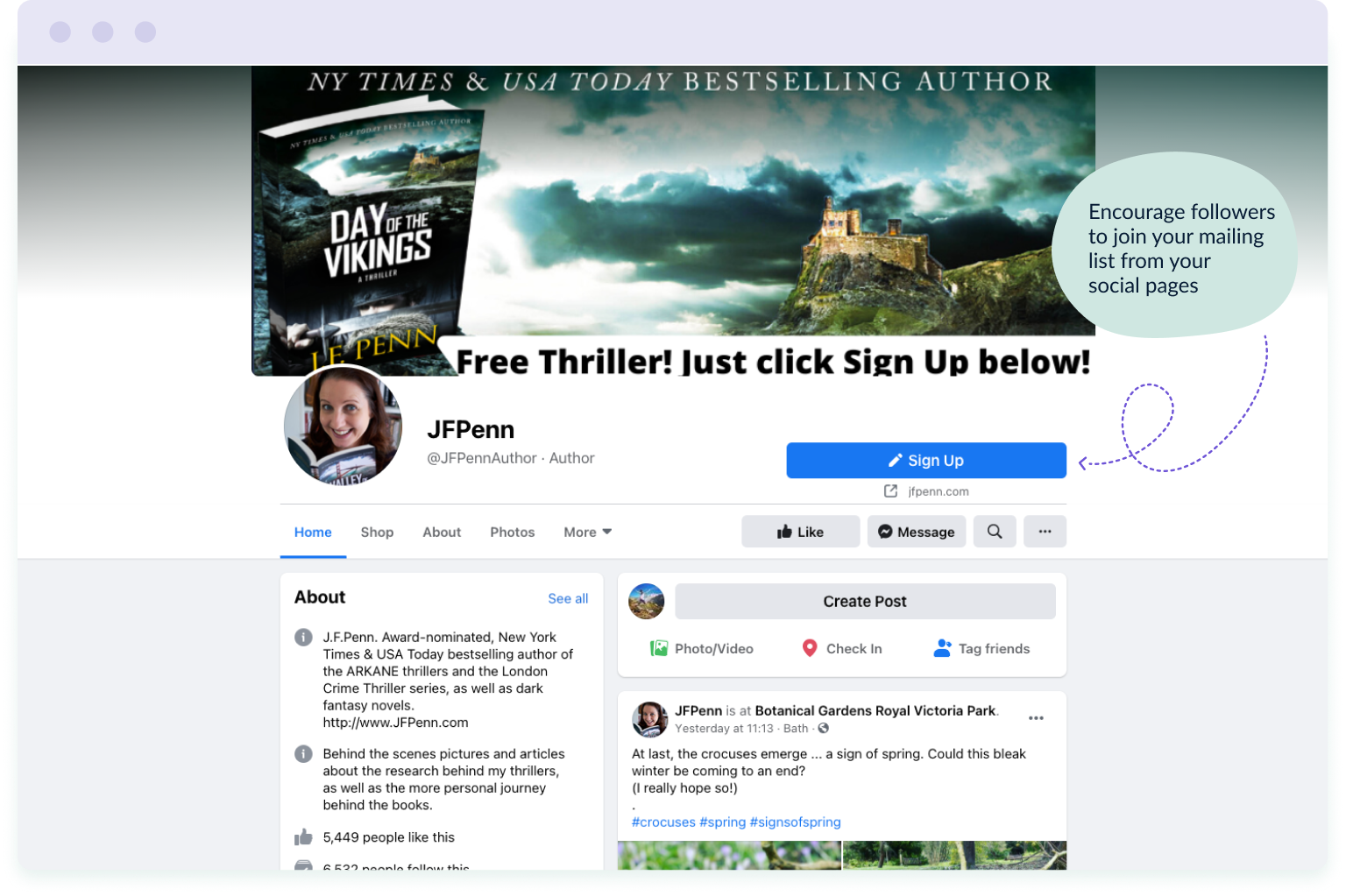
You can also promote your mailing list with organic posts. And if you’re happy to invest a little cash, you could also run paid ads on Facebook promoting your giveaway in order to get more subscribers.
Another good place to promote your mailing list is at the back of your existing books. Here, you’ll be speaking to people who have just read (and hopefully loved) your book. So there’s no better time to ask.
With e-books you can add a link to your landing page that takes readers straight to your sign-up form.

“Include an author statement in the front matter of your e-books. It can be anything from, ‘Sign up for my newsletter for release updates and teasers’ to ‘Sign up for my newsletter and receive a free e-book, and be the first to know about new releases, and discounted books!’”
– Andrea Smith
Wrapping up
For more control over your writing career, an email list is the way to go. You can build an engaged following without having to rely on Amazon or BookBub for promotion. And you’ll have your own marketing channel that you can nurture and grow.
But you don’t even have to have written your first book to take advantage of the power of an author’s email list. Write a tantalising synopsis, give away a chapter preview and create interest in your book before it’s even released.
Promote your list well enough and you could have thousands of people waiting for your next book release. And for an indie author, what could be better?
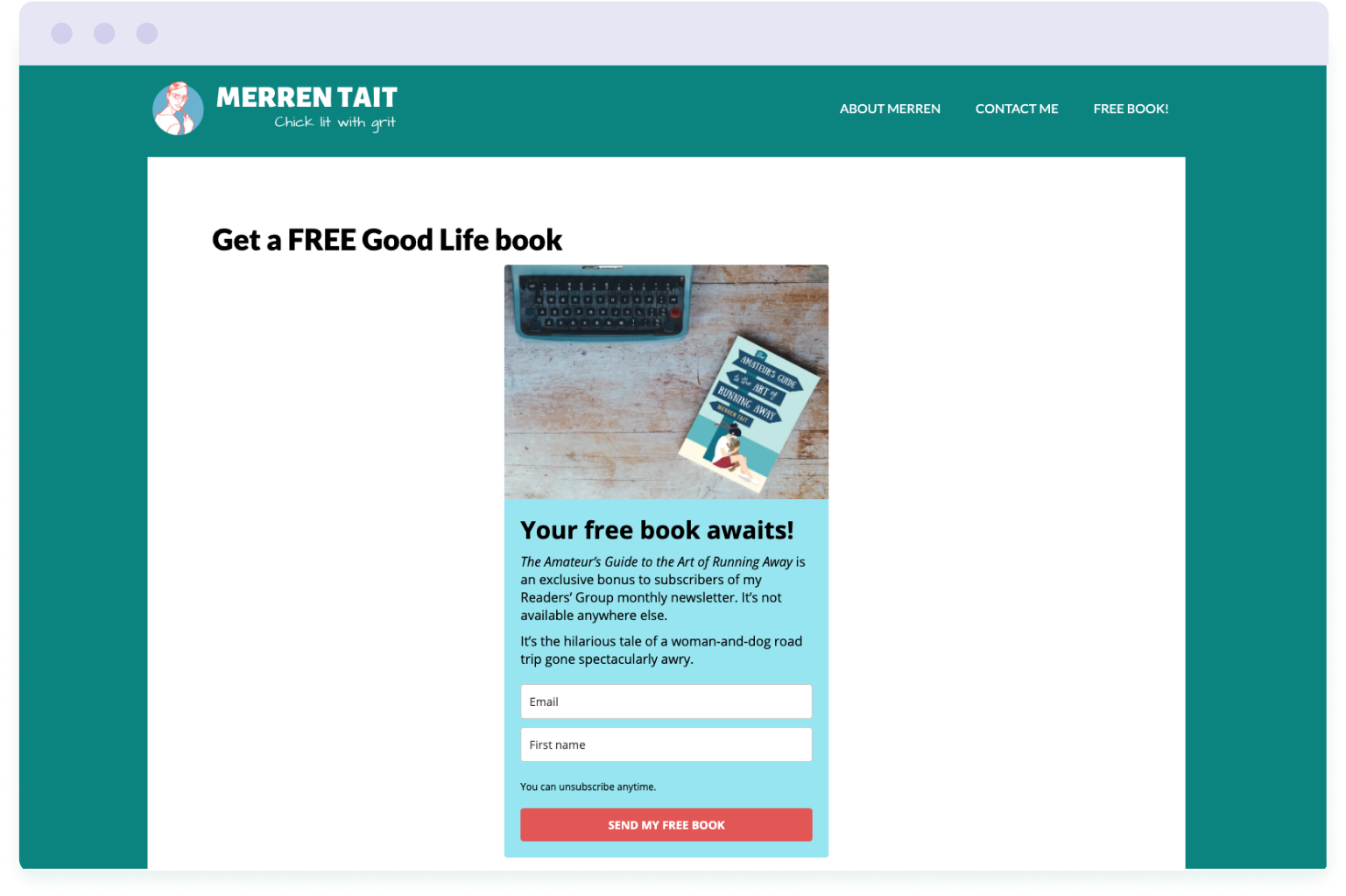
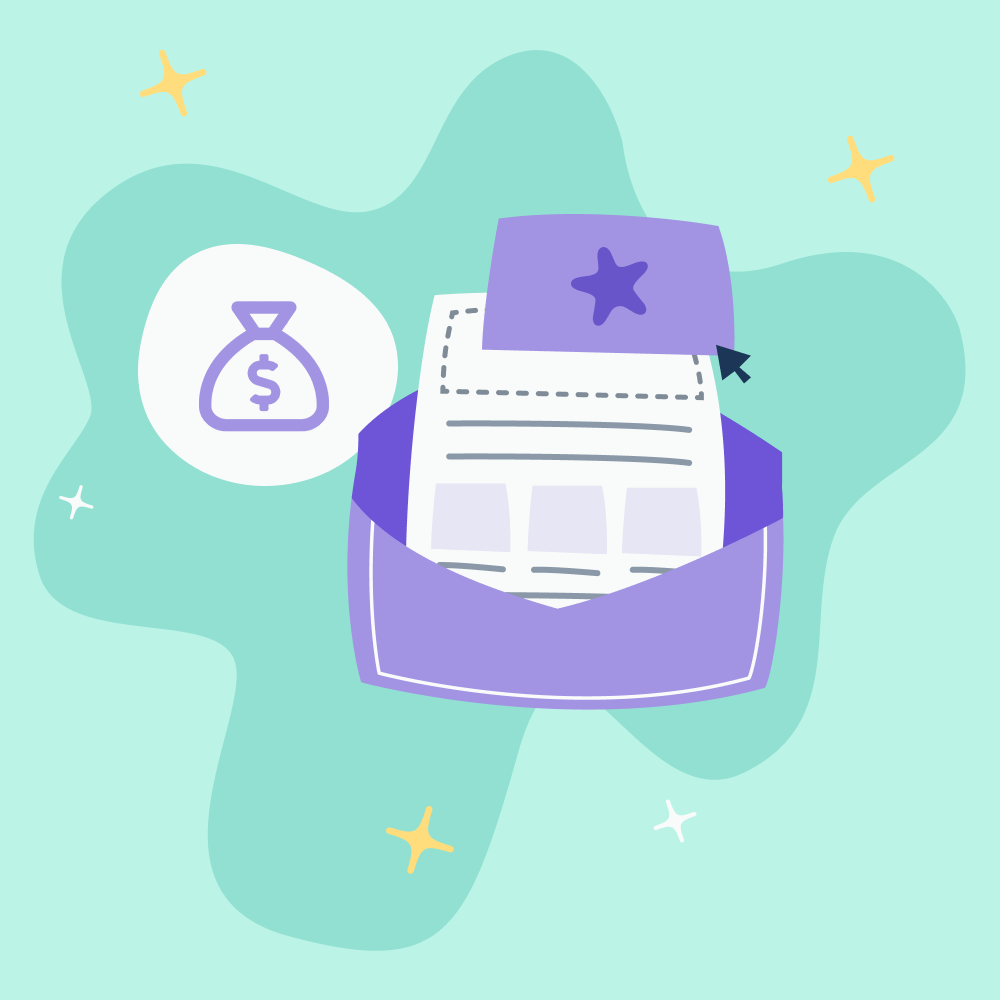
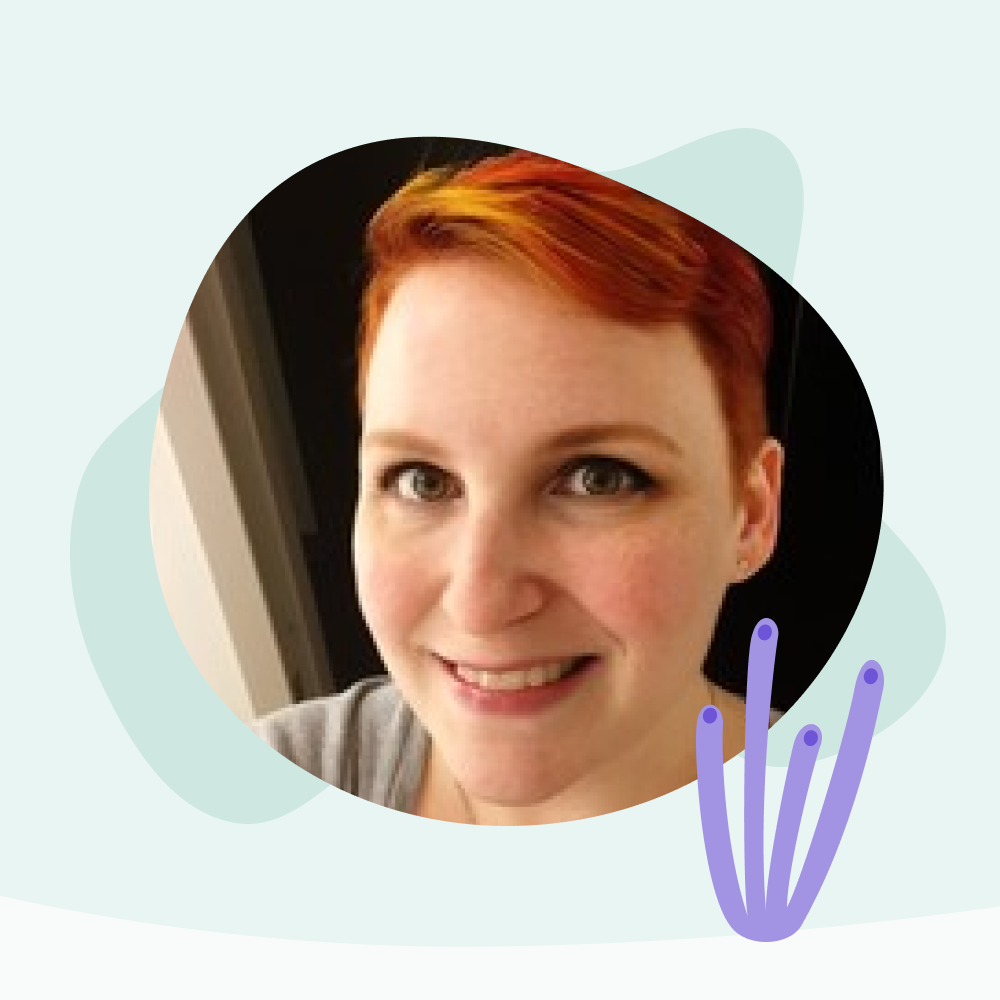
No Comments
Leave a comment Cancel